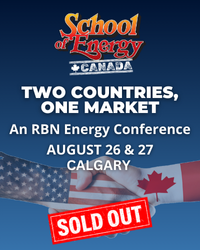In the early days of the Shale Revolution, merger-and-acquisition activity in the midstream sector was happening at a frenetic pace. That frenzy peaked with crude oil prices in 2014, then petered out over the next five years before hitting bottom in COVID-impacted 2020, when abysmal demand and commodity pricing hampered prospects for the production and transportation of oil, natural gas and NGLs. In those dark days, it seemed the only deals getting done were for bulk orders of hand sanitizer and toilet paper from Amazon. Now, with energy prices soaring and energy companies regaining some of their pre-pandemic luster, the pace of deal-making in the oil patch in 2022 looks poised to maintain the momentum that carried through the end of 2021. But buying or marketing midstream assets isn’t nearly as simple as ordering through your Amazon Prime account. Considerable effort is put into the strategy of selling and the diligence of purchasing and, for the uninitiated, the process can be daunting. In today’s RBN blog, we continue our series on midstream dealmaking with a look at what to expect in a sales process.
We began this blog series, in Part 1, by reviewing the evolution of the midstream sector over the past couple of energy economic cycles, focusing on the tremendous opportunities presented to master limited partnerships (MLPs) in particular during the Shale Era. Then, in Part 2, we discussed how big MLPs got an assist in the midstream buildout from what we likened to a farm system in baseball: the private equity-backed management teams that build up assets for eventual sale. And we talked about the financial incentives for the various groups involved in those deals, including limited partners (LPs), private equity (PE) firms, and management teams. Those types of deals still happen in the midstream sector but, increasingly, we’re seeing opportunities to leverage the PE-backed model to fuel growth in “near-green” projects where hydrocarbon-based energy is produced in a manner that limits Scope 1 and Scope 2 emissions. That trend is being driven by ESG-minded investors, who are getting increasingly goosy about investing in traditional fossil fuel infrastructure. In fact, the day after we published Part 2, PE firm Carlyle joined others in committing to net-zero emissions across its investments by 2050. We’ll come back to some strategies they might use to accomplish that goal later in this series. Today’s blog follows on the deal-making aspects of the first two but with a focus on the actual process of buying and selling.
Let us start by saying that the build-and-flip process isn’t unique to the midstream — pretty much all segments of the industry do the same thing. So, what actually happens when an asset or piece of infrastructure is set to change hands? Here’s a typical scenario for how one of these deals plays out. To begin, the owners or their representatives create a “Teaser,” a one-to-three-page summary of the asset and an opportunity to get a sense of how many interested buyers are out there. The Teaser is sent to everybody and their brother — up to 100 potential buyers, in some cases. For those who might seriously contend for the purchase and who are willing to sign a non-disclosure agreement (NDA), the sellers develop a pitch book called a Confidential Information Memorandum (referred to as the CIM; pronounced “sim”) extolling the virtues of their assets. Potential buyers will use this and any other tools at their disposal to survive the bidding process.
Join Backstage Pass to Read Full Article







